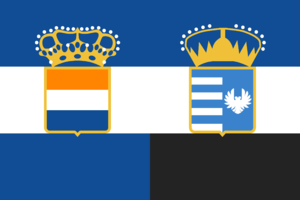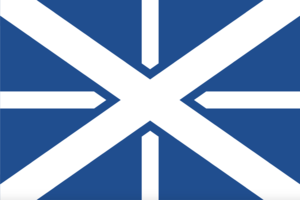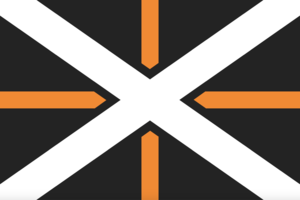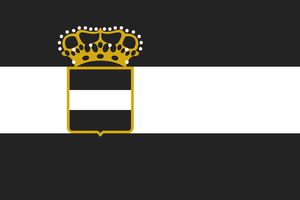Laveska
|
Federal Republic of Laveska
Федеративная Республика Лавеская
(Federativnaya Respublika Laveskaya)
|
|||||
|---|---|---|---|---|---|
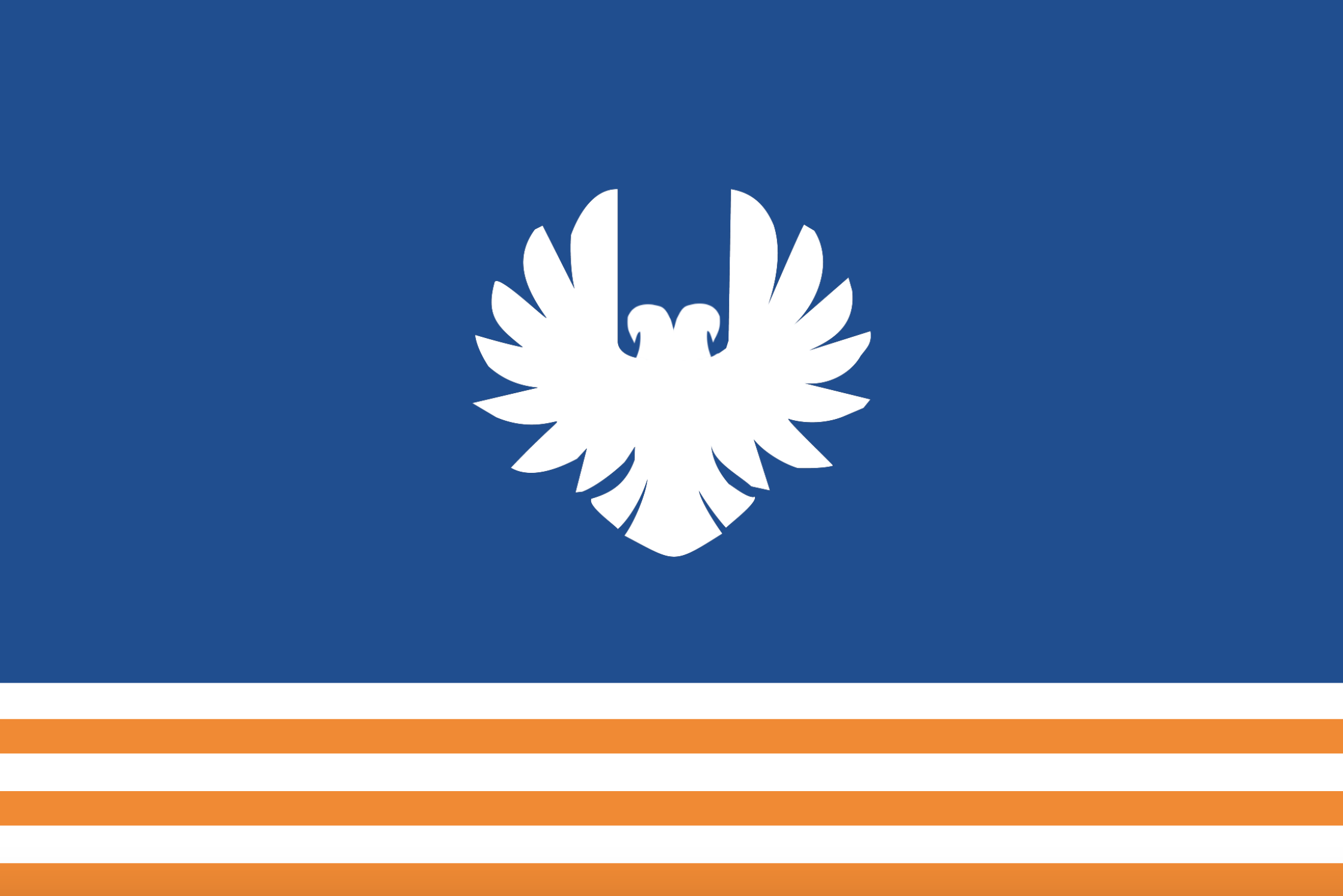 |
|||||
| The six States of the Federacy governed by the Consular Phoenix and the Blue of the Seas. | |||||
| Motto | Ex Unitate Vires | ||||
| Common Name | Laveska | ||||
| Anthem | Дороги (Roads) | ||||
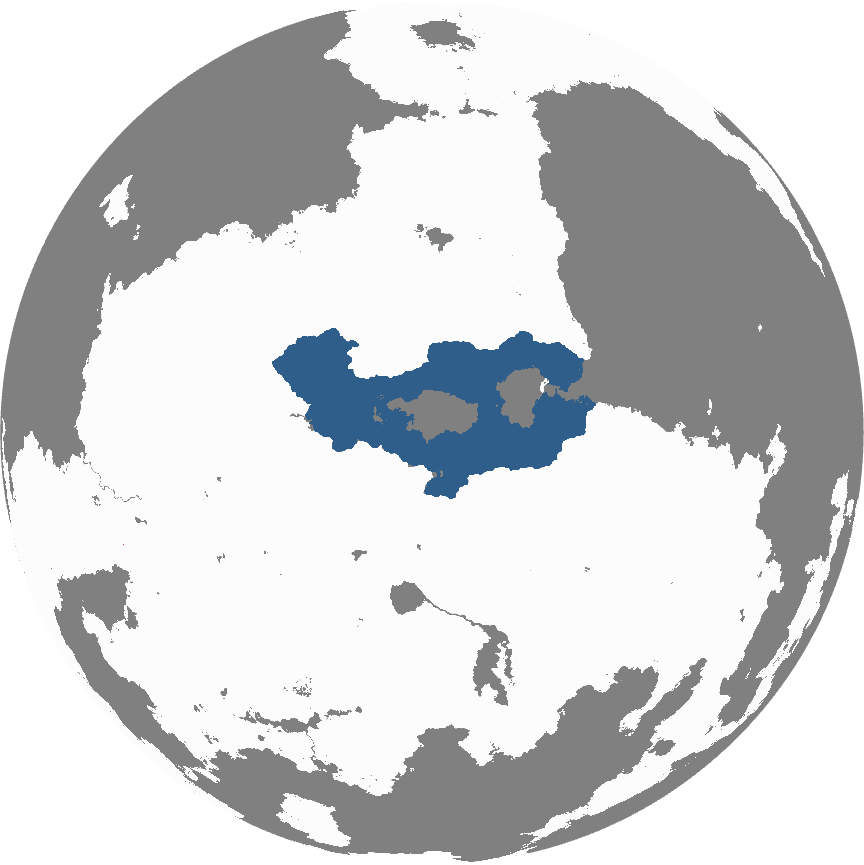 |
|||||
| Demonym | Laveskan | ||||
| Official languages | Aesori, Zeroan, Zokesian, Strelkan | ||||
| Currency | Laveskan pound | ||||
| Politics | |||||
| Capital | Lavesk | ||||
| Government | Federal presidential constitutional republic | ||||
| Foundation | 2090 | ||||
| Consul | Khristianskiy Asimov | ||||
| Preceded by | Laveskan Seafarer's Republic | ||||
| Demography | |||||
| Ethnicities | Laveskan, Zeroan, Strelkan, Zokesian | ||||
| Population | 5,253,774 | ||||
| Area | 61,215 km² km² | ||||
Laveska, officially the Federal Republic of Laveska, is a country that is part of the United Imperial Federation. Covering the eastern half of the Dorvic continental UIF, Laveska borders Fegeland to the southeast, the other UIF member state of Maryurtia to the west, Doren to the south, and various warlord states to the north.
Etymology
The name Laveska originates from the Eastern Aesori word Lavesk'ani, meaning "Eternal Fountain," referring to the Wakir Ocean. Though Eastern Aesori is a largely dead language now, due to the fact that the language was a brute-force combination of Old Aesori, Reciprocan, and Feguan, the name stuck and when a group of merchants established a major settlement on a peninsula bordering the Wakir Sea, they named the city Laveska, a shortening of her original name. As time went on and Laveska became less of a city and more of a state, the name became attached to the whole region north-west of Algiza.
Government
The Laveskan regional government consists of a tricameral legislature, the Senate which is voted in by the people every four years, and a Presidium of which half of its representatives are voted in by the people and the other half by state governments. There are not many parties but a variety does exist, and coalitions are necessary to maintain any reliable grasp on power. The third house is the Grand Syndicate, where trade unions send their representatives to the government. The Syndicate is independent of the Senate and Presidium, but has little power and can be overruled by a vote in either the Senate or Presidium. The executive consists of a pair of Consuls, one for internal affairs, and the second for foreign. The High Court handles judicial matters, and the military is led by the Laveskan High Command, with the external consul at its head. The Laveskan government sends its External Affairs consul to represent it in the UIF's electoral college.
States
Laveska's current constitution grants its States a relatively low level of autonomy, a practice largely a result of the numerous Laveskan civil wars that occured under weaker governance.. Policing is done at the local level through federally-deputized people's militias, which themselves are organized into a union of militias, the Soyuz Militsii, that can be rapidly mobilized in cases of war or national emergency. This allows the federal government to protect the rights of its citizens without having to micromanage each of its component areas.
Economy and Infrastructure
Though Laveska used to rely largely on maritime trade for its economic survival, union with the rest of the UIF has granted Laveska access to the wider Aenosphere, which has since massively boosted and diversified Laveska's economy. Shipyards and the supporting infrastructure for them still dominate eastern Laveska's economy, while mining, farming and lake transport dominate the west.
The urban areas of Laveska are notable for their employment of "Sotsgorod," the Arcadian Communist style of architecture. Due to the abject failure of the Communist system in Arcadia however, Laveskan Sotsgorod architecture was of far higher quality than its Arcadian counterpart. These cities eliminated the need for the suburbs, freeing up massive amounts of land for farming operations.
The coastal areas of Laveska are renowned for their industrial prowess, with shipbuilding at the forefront. Metals from western Laveska are shipped to the east using trains or lake freighters. Many of these metals, those that cannot be used by the manufacturing industry or those that are simply not needed, are shipped overseas. Laveskan ports are also important hubs of trade, with their vast facilities allowing for even the largest ships to be attended to in record time.
History
Pre-unification times
Laveska was originally inhabited by the Reciprocan peoples, though not much is known about them other than that they were an offshoot of the Feguanesians. Starting in the 12th century, the Great Belasrii Empire began expanding eastward, scattering droves of ethnic Aenian settlers into western present-day Laveska. As Doren nomads drove the Maryurti peoples to the region known as Maryurt today, trade routes shifted, and Maryurti raiders began crossing the Larkuno Mountains. As such the eastern part of modern Laveska is populated by a mix of Laveskan and Maryurti peoples, known as the Zarorans, due to the Maryurti city of Zaror established during this time. Also a result of Maryurti raids was the formation of a "Military Frontier" along the eastern Belasrii border, and a massive boom in the market for mercenaries. These mercenaries would also often go further eastwards and avail themselves to the warring Reciprocan kings.
The Laveskan National Awakening
For three centuries ethnic Aeserian and Belasrian mercenaries formed companies and would be paid to fight each other at the whim of rich Reciprocan kings with lacking native militaries. Since the various Reciprocan ethnicities and states were extremely xenophobic, the Aeserians and Belarsians were forbidden from marrying local Reciprocan woman, leading many prospective mercenaries who made the trek to marry before departure, bringing their wives to the frontier. Such xenophobic policies ironically had the adverse effect of creating a large, largely ethnically "pure" Aesero-Belasrian minority within these lands, of whose main employment was in the soldiery of the warring states. Tensions would slowly begin boiling as these settlers began to find more connections with their ethnic brethren and began resenting fighting each other, no matter how great the pay. Generations of Aeserians and Belasrians had bled and bled each other for the gold and favor of their Reciprocan rulers who did not even permit them to marry Reciprocan women. Within the Aesero-Belasrian fort towns poets and writers began making clear their dissatisfaction with the status quo. Among these thinkers was a man named Arkady Aleksandrovich Navarinov, also a mercenary commander and mayor-captain of the Aesero-Belasrian settlement at Belogore, just east of the major port city of Lavesk and across the strait from Hout, the then crown jewel of eastern Doren. He became ever more involved in this new movement, and using his unique position among the poets as a military commander to orchestrate the first victory for a unified Laveskan nation at the 1444 battle of Pegan, wherein through adept use of messengers convinced the opposing army's Aeserian contingent and its commander to join forces with Navarinov's army, both turning on their Reciprocan masters.
The Golden Age
By the time Laveska escaped from its economic and environmental troubles, the Industrial Revolution was in full swing. Laveska was in luck for it had access to the vast metal deposits past the Zaror River. As the original Consuls were still alive, they helped to lead the initial push for worker's rights. As per precedent set by the Consuls, Laveska's people maintained a pro-union tradition. Though Laveska remained rather isolationist during this time, its military grew, and internal strife was high, and labor uprisings were common, although such problems died down by the end of the century, just in time for Sanctum in 1900 to invade Alecton in a bid to control the Nautilane Straits. Laveska rallied to defend its ally, controlling a small portion of the island of Korfu known as the Laveskan Quarter. In a hasty defensive scheme, Laveska and Alecton were able to cobble together a task force of cruisers and merchant raiders to hold off the Sovies until a proper task force could be assembled. For fifty-five days the Laveskans and Alectonese launched counterattack after counterattack, eventually driving the Sovie invasion force back into the sea. Following this war Laveska retreated back to its own borders and entered a period known as the Golden Age, where Laveska, unburdened by war, did not progress at a rapid rate, but did provide a comfortable and peaceful life for its citizenry.
The Great Decline
As the new millennium approached, Laveska found itself in a dire situation. Its infrastructure was old, outdated, its people were poorer than ever, the country had stagnated and corruption began to take hold. In a last-ditch attempt, Laveska's government attempted to revive the economy through a series of spending programs and infrastructure projects. Though these programs failed at fixing the economy, they conveniently helped the nation prepare for war. The military-industrial complex in Laveska realized the opportunity and in 2015, the Laveskan Senate voted to declare war on Fegeland. With no handle on the situation, the destitute Laveskan forces failed miserably, with any advance matched by a counterattack of equal or greater force. Though morale was low, the Laveskans fought on, knowing they had no alternative in their dying nation. In 2019, several Laveskan admirals, known as the "Freemen," knowing the situation was dire, and that their nation was on the brink of collapse, started planning to overthrow the government, or simply to go rogue and surrender to a third party. The Freemen decided to inform their officers of their intentions, and instructed them to pass on the knowledge to their sailors when the time came. No date was set in advance, and everyone with knowledge of the coup attempt understood that the opportunity would one day present itself naturally.
On the 11th of November, 2019, Constitution Day, the Laveskan Navy was ordered to sortie for the Feguan island of Huturoa. Instead of carrying out this order, the Laveskan ships trained their guns on Lavesk's government buildings and opened fire. National Guard units almost instantly turned on their former masters, followed by the Army and later the Air Force. The Freemen, having spent months devising a method of "Responsible Government," established a transitionary state, the Laveskan Mercantile Collective, an oligarchy under their command, for six months, ending the war with Fegeland, rooting out most of the corruption and fixing up most of Laveska's infrastructure. After this six-month reconstruction period, the Collective became the Laveskan Seafarer's Republic, a constitutional republic that only allowed sailors to vote, and captains to run for elective office.
Seafarer's Republic, 2019-2090
One of the first priorities of this "Responsible Government" was to adopt the policy of "Slow, Fighting Retreat," granting independence to historically independent regions. The Electorate of Feniks, seen as an unneeded burden on a hyper-maritime-centric government and culture, was granted independence 17 January 2020. Due to the absolute collapse of the Maryurti government, it was safe to cut Zeroa loose and on the 10th of March, the Republic of Zeroa and the Grand Duchy of Tryos-Salis were granted independence. All of the aforementioned independent states had a guarantee of protection from the Laveskan government, although they were expected to form and run their own militaries. As per tradition, and to save on logistics costs, people's militias were established in all four nations by local citizens. Though the LSR's economic policies were close to their socialist counterparts in Doren, they refused to abandon the capitalist framework and as such did not join PAKT when it was created.
[This section is currently incomplete, I will revisit it at a later time, as I need to accurately replace the Reciprocity.]
Vengeful Liberty, 2090
The LSR was in a state of decay, the heady days of the late '20s and '30s were long gone and the nation was suffering yet again, although LSR policies were keeping the steady crumbling of the Laveskan economy at bay for as long as they could. Events came to a head on 9 May 1989, when the Laveskan oil tanker Gigantskiy Kal'mar sank off the coast of Fallenhout and caused a deadly oil spill that nearly killed all sea life in the area. Viewing the government as authoritarian and without regard or care for the environment, young students, having not lived through the pre-Seafarer's Republic days, protested en masse against the established system, and they were met in turn by massed counterprotesters. Often times the counterprotestors had children in the protest opposite them. The students and local activist leaders called for help from the international community, and matters were made worse when Marines fired live rounds into protestors attempting to storm port facilities in Perpetua. The death of the protestors was then taken up as an issue to the international community by Krome. Around this time, Operation Vengeful Liberty commenced against Zokesia to prevent the actions of the Grail regime. CSD agents were deployed into Laveska to arm some of the protestors and local rebels and give them coherent leadership.
